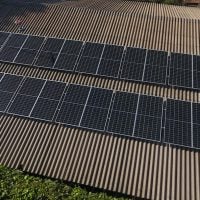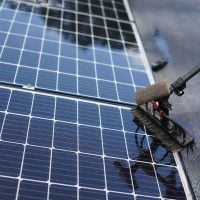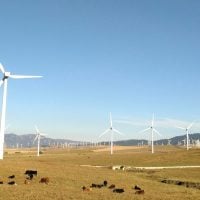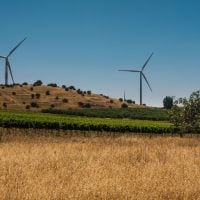Deadline: 31-Jul-23
The Environmental Protection Agency (EPA) is soliciting applications from qualified entities that have an interest and experience in the scope of this Initiative that is conducting assessments or tests of new or existing environmental monitoring and remediation technologies for identifying and recovering critical minerals (CMs) at contaminated legacy mining sites.
Objectives
- The recipient will manage this Initiative. Activities and responsibilities of the recipient must include:
- Establishing a stakeholder group and technical panels to help in prioritizing technical monitoring and recovery needs (i.e., categories of technology to assess and/or test).
- Developing and submitting a Scientific Data Management Plan and a post-award Initiative Quality Management Plan (QMP) and operating the Initiative in accordance with their QMP.
- Providing outreach workshops;
- Preparing and developing technology testing protocols that include stakeholder needs.
- Developing performance metrics for assessing and testing new or existing technologies as well as sustainability metrics for evaluating long term and cross media impacts of the characterization or recovery technologies.
- Potentially managing subawards/contracts (as needed) with organizations for managing assessment, testing and data collection, and write progress and summary reports.
- Applications may include (but are not limited to) proposed CM identification/monitoring and recovery projects that provide:
- Outreach on the Initiative’s activities and track outcomes for impacts;
- Technology and process evaluations or demonstrations;
- Technical assistance, outreach and/or training to model or accelerate solutions;
- Feasibility studies;
- Expanding acceptance of monitoring or reclamation technologies at mining sites through technology demonstration projects or training and technical assistance; or
- Demonstration, training, or technical assistance projects for developing or improving existing technologies for ‘alternative use.’
- Help make technology assessments more relevant to stakeholders through such activities as establishing relationships with other organizations that conduct technology assessment and performance testing similar to that undertaken by the Initiative.
Scope of Work
- Applicants must have the ability and knowledge to conduct assessment, testing and quality assurance support for new (SBIR Phase 2 and 3) and commercial environmental monitoring and remediation technologies. Ability and knowledge can be illustrated in a number of ways, including but not limited to having conducted the same or similar activities in the past as those described here. Familiarity with Federal cooperative agreement or grant operation and management would also be helpful for applicants to highlight. Displaying and describing productivity under these or other Federal agreements would also benefit in the solicitation process.
- Assessments or testing of new or existing technologies could include investigating/researching the performance capabilities of such technologies and publishing the findings for stakeholders, users and purchasers of innovative technologies allowing them to make informed decisions regarding acquisition and/or use of these environmental technologies. This Initiative is similar in scope and activity to past EPA SITE and ETV Program cooperative agreements; however, this new Initiative is focused on environmental monitoring and remediation technologies for identifying and recovering CMs at contaminated legacy mining sites. Through operation of this Initiative, the cooperator will conduct technology assessment and performance testing of new or existing environmental technologies that will help non-profit organizations, industries, businesses, states, communities, and individuals make better-informed decisions when selecting environmental technologies for monitoring or recovering CMs at legacy mine sites.
- This includes establishing stakeholder groups to help develop priority technology categories for technology assessment and performance testing, assist in the development of testing and assessment protocols and plans, help review assessment reports and identify collaborations for assessment and testing of technologies. The recipient will operate the Initiative by carrying out its work consistent with its quality management plan (QMP), and as a result, provide the public with objective, quality-assured assessment of technologies across a broad spectrum of monitoring and remediation technology assessment categories including, but not limited to: water monitoring and remediation (chemical concentration monitors, sorbent media for contaminants in water, water treatment technologies that remediate or destroy contaminants such as UV and oxidation for removal of groundwater contaminants); and solid media (soil and sediment) monitoring and remediation (chemical concentration monitors, sorbent media for contaminants in soil and sediment such as granulated activated carbon [GAC] addition for sorbing metals or other contaminants, soil and sediment treatment technologies that remediate contaminants such as sorption of contaminants on granular activated carbon).
- EPA will provide technical consultation and quality assurance support in concert with the recipient’s activities, as well as assist with program outreach and communication of technology assessment and performance testing data and results. It is foreseen from EPA’s experience with the retired verification program that products resulting from this Initiative (reports and other documentation from the assessment and testing of technologies) will be widely used by vendors in selling their technologies, purchasers in making purchase decisions, and state regulators in permitting environmental technologies.
Funding Information
- The total estimated funding for this competitive opportunity is approximately $3,000,000. Requests for amounts in excess of a total of $3 million in EPA funds, including direct and indirect costs, will not be considered.
Outputs
- The term “output” means an environmental activity, effort, and/or associated work product related to an environmental goal and objective that will be produced or provided over a specified period of time or by a specified date. Outputs may be quantitative or qualitative but must be measurable during an assistance agreement funding period.
- Outputs may include:
- Technology assessment and performance testing documents and reports for environmental monitoring and remediation technologies for use at contaminated legacy mining sites. These documents include external, public documents and reports, peerreviewed journal articles and other outreach materials targeted to specific audiences to achieve the objectives of the Initiative.
- Generic assessment protocols, technology assessment and performance testing QA plans for environmental technologies.
- Outreach to users of the outputs is a significant activity under the Initiative. It should be anticipated that several public presentations be made to stakeholders and user groups annually, relating to the activities conducted by the Initiative. Stakeholders and user groups include, but are not limited to, technology developers, technology buyers, consulting engineers, academia, industry associations, public interest groups, and local governments or tribes
Outcomes
- The term “outcome” means the result, effect, or consequence that will occur from carrying out an environmental program or activity that is related to an environmental or programmatic goal or objective. Outcomes may be qualitative and environmental, behavioral, health-related, or programmatic in nature. Applications must include a description of anticipated project outcomes resulting from the project outputs, even if the outcome to be achieved is beyond the assistance agreement funding period. Include the quantitative target associated with the outcome, as appropriate.
- Outcomes from the Initiative’s efforts include:
- Pollutant or emission reductions, resource conservation, increase in financial and economic competitiveness, greater regulatory compliance, increased technology use and acceptance, and scientific advancement. The recipient will be expected to track outcome impact incidents supported under the proposed cooperative agreement.
Eligibility Criteria
- In accordance with Assistance Listing, applications will be accepted from:
- U.S. Territories and possessions (includes institutions of higher education and hospitals),
- State (includes District of Columbia, public institutions of higher education and hospitals),
- Local (includes State-designated Indian Tribes, excludes institutions of higher education and hospitals),
- Public nonprofit institution/organization (includes institutions of higher education and hospitals),
- Federally Recognized Indian Tribal Governments,
- Private nonprofit institution/organization (includes institutions of higher education and hospitals)
For more information, visit Grants.gov.









































